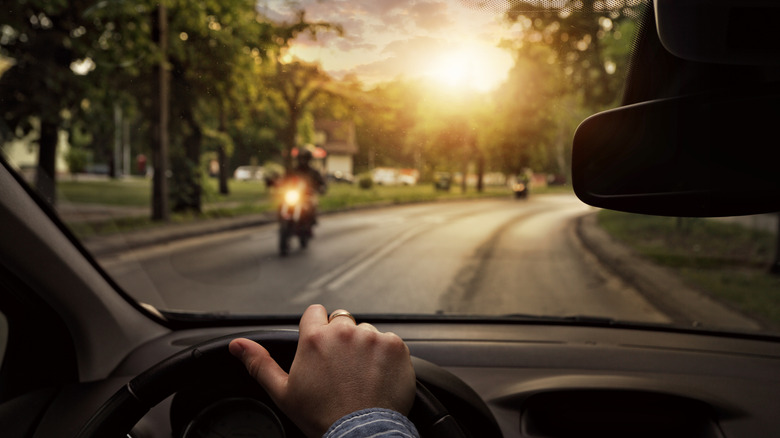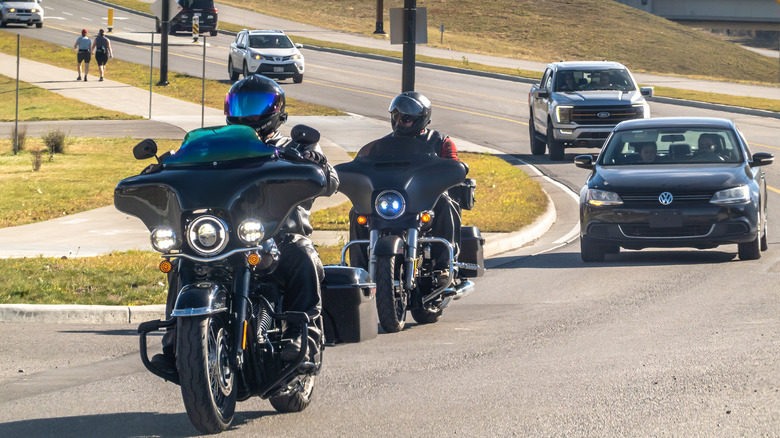Drivers Who Don't Know These Motorcycle Rules Are A Serious Risk On The Road
It's an absolute must for motorcyclists to know the rules of the road before heading out on a ride, but why isn't the same expected of the drivers they share the road with? Car commuters obviously make up a greater percentage of people on the road than motorcyclists, and yet motorcycle riders continue to be more at risk than drivers. It's grim, but the number of motorcycle fatalities is about 30 times higher than the number of car fatalities each year. There are a few things that drivers can commit to memory to try and reverse this trend: Know your state's lane filtering and lane splitting laws, keep a safe distance from motorcycles on the road, and watch your blind spots.
First and foremost, confusion about lane filtering and lane splitting laws continues to put everyone on the road at serious risk. Lane filtering is when two-wheeled vehicles weave in and out of lanes during traffic, while splitting is when they ride the line between lanes in traffic. Both techniques are only expressly legal in California, while states like Arizona, Utah, Montana, Minnesota, and Colorado have laws that allow filtering only. Several dozen states have banned both, and many others remain in legislative limbo as proposals are in various stages of advancing or stalling. Because motorcyclists face some of the highest risks on the road, it's in drivers' best interest to know whether or not lane splitting and filtering are legal where they happen to be driving.
Keep a safe following distance from motorcycles
Maintaining a safe following distance is another important thing for drivers to do for the sake of motorcyclists everywhere. If drivers could make a habit of leaving more space between their vehicle and a motorcycle, we could all give them the room they need to downshift, swerve for better visibility, and adjust their lane position, all of which could lead to a collision if a driver is following too close and not paying attention.
While motorcycle riders all have to be properly licensed and trained to hit the road in the first place, motorists should make an effort to understand how motorcycles work, too. They can decelerate faster, move differently, and disappear more easily compared to cars. Try to respect the three-second rule with motorcycles, at the very least. More than that definitely isn't going to hurt, though. That way, everyone has room to do their thing without fear of colliding with anybody.
Watch your blind spots, especially when turning or changing lanes
Another major tip for better relations between cars and motorcycles: Minimizing your car's blind spots. These blind-spot collisions are a persistent danger on the road, yet they could be preventable if cars paid more attention while turning, merging, or changing lanes. It's like when people say to be the bigger person: Cars are larger than motorcycles, and so it's the responsible thing to be extra aware and look out for the smaller vehicles.
Any time you find yourself behind the wheel of a car and you approach an intersection, get ready to change lanes, or make a turn, take a few extra seconds to double-check your mirrors, look over your shoulder, and then proceed with caution. This is basic driver handbook stuff, but it absolutely bears repeating. Of course, basic human attentiveness is still the most important factor on the road. Pay attention, give motorcycles their space, and be aware of your blind spots, and with any luck, we'll see those scary statistics start to drop.


